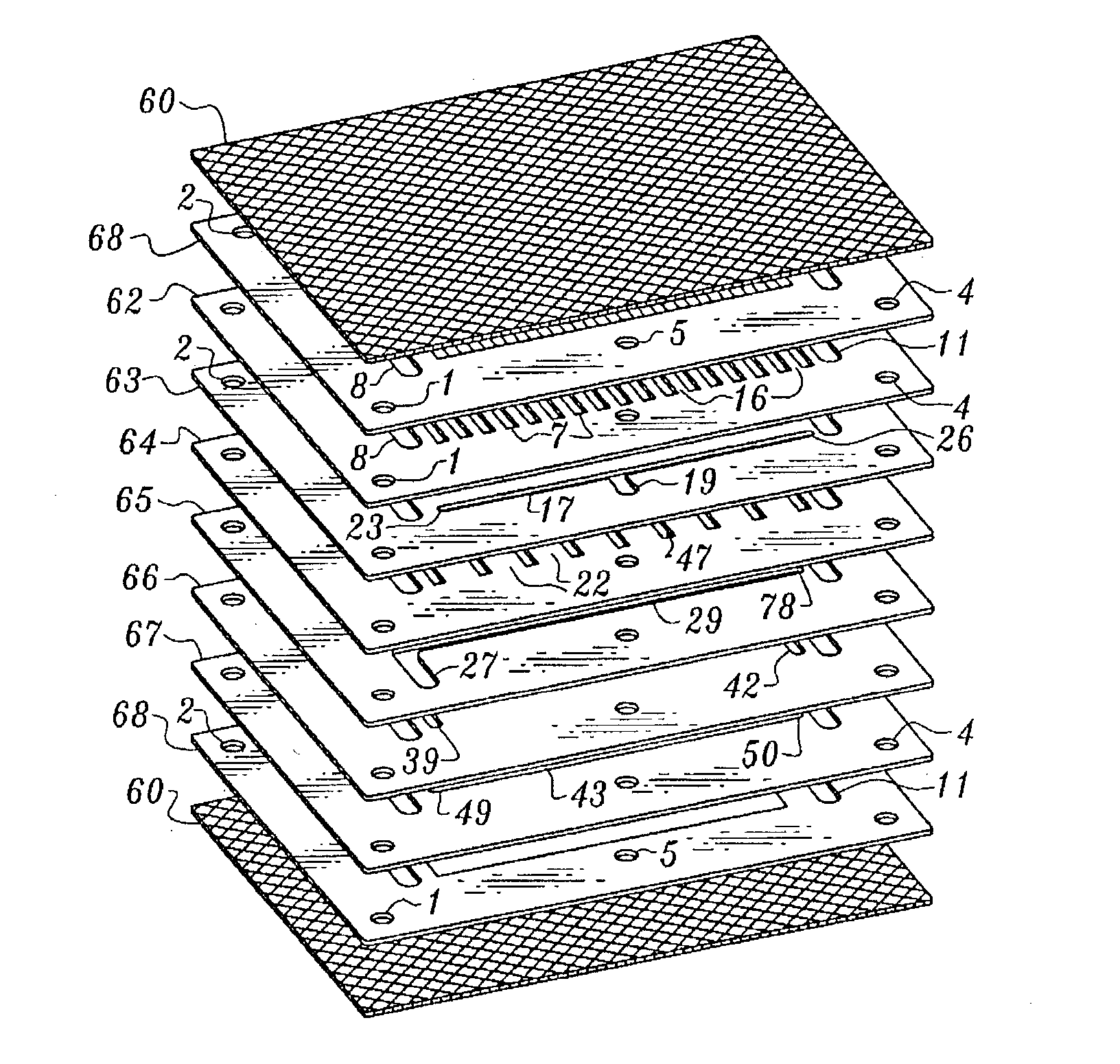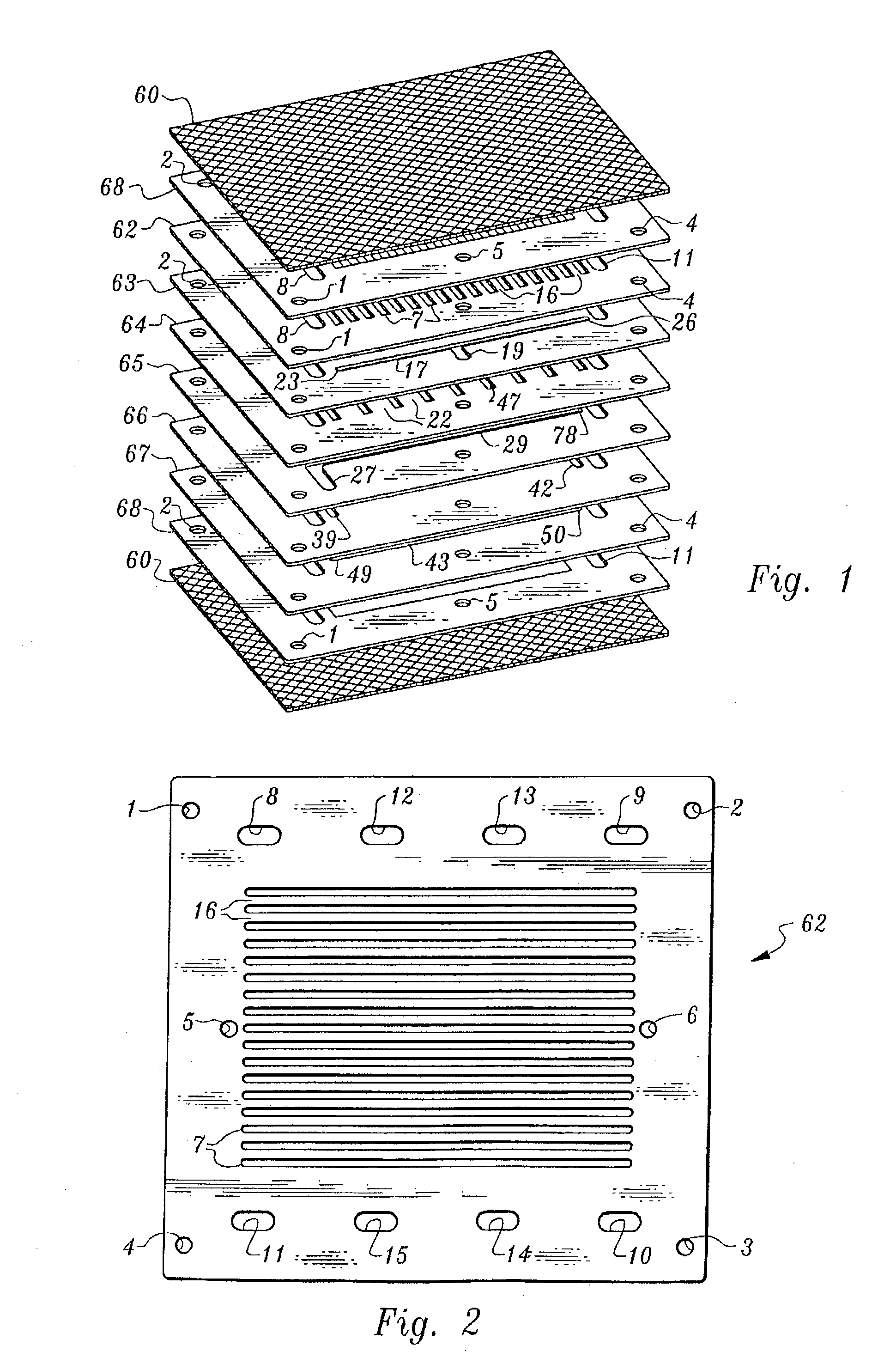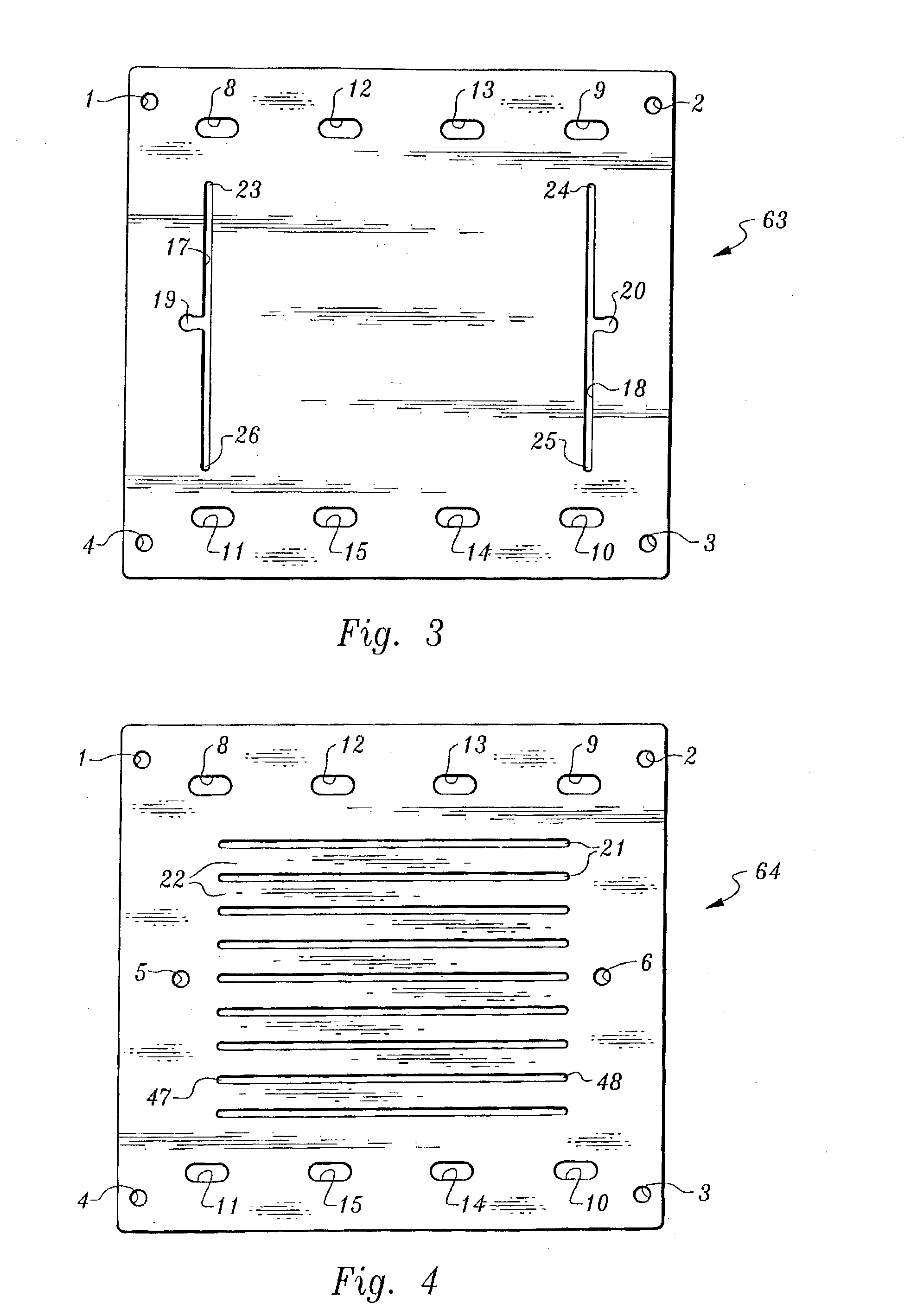Electrochemical fuel cell comprised of a series of conductive compression gaskets and method of manufacture
a technology of conductive compression gaskets and fuel cells, which is applied in the direction of cell components, final product manufacturing, sustainable manufacturing/processing, etc., can solve the problems of obstructing commercial development and deployment, technical and economic difficulties, and abating the realization of pem fuel cell technology as a viable commercial means, so as to facilitate mass-production and low-cost fuel cell products
- Summary
- Abstract
- Description
- Claims
- Application Information
AI Technical Summary
Benefits of technology
Problems solved by technology
Method used
Image
Examples
Embodiment Construction
[0024] To understand the disclosure of the various embodiments and modifications of embodiments that follows, a detailed explanation of the Figures and their respective components is helpful:
[0025] FIG. 1 shows the exploded isometric view of a consolidated bipolar separator that embodies an example of the disclosed invention, the various components which make up this view are:
[0026] The chemically benign meshes 60 are intended to interface with the MEA, which is not shown. The mesh is open enough, to allow the reactants to flow and diffuse from the channel features 7 and 43 to their respective electrodes within the MEA.
[0027] The chemically benign structural frame 68 comprising die-stamped through-features that allow the fuel cell fluids--fuel, oxidant and HTF--to pass through the structural frame. These features are the fuel manifold inlet 5; HTF manifolds, 8, and 11; and the oxidant manifold mediate inlet ducts 33 and 34 (see FIG. 6). Likewise, the structural frames circumscribe t...
PUM
| Property | Measurement | Unit |
|---|---|---|
| Electrical conductivity | aaaaa | aaaaa |
| Flow rate | aaaaa | aaaaa |
| Flexibility | aaaaa | aaaaa |
Abstract
Description
Claims
Application Information
 Login to View More
Login to View More - R&D
- Intellectual Property
- Life Sciences
- Materials
- Tech Scout
- Unparalleled Data Quality
- Higher Quality Content
- 60% Fewer Hallucinations
Browse by: Latest US Patents, China's latest patents, Technical Efficacy Thesaurus, Application Domain, Technology Topic, Popular Technical Reports.
© 2025 PatSnap. All rights reserved.Legal|Privacy policy|Modern Slavery Act Transparency Statement|Sitemap|About US| Contact US: help@patsnap.com



